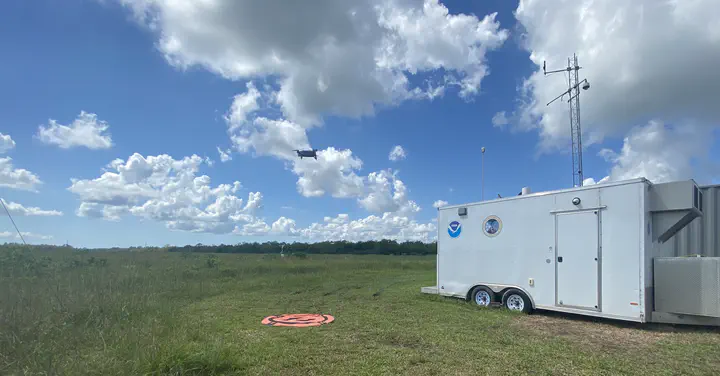TRACER-CUBIC
Coastal Urban Boundary-layer Interactions with Convection

Summary
In tandem with the TRacking Aerosol Convection interactions ExpeRiment (TRACER), the Coastal Urban Boundary-layer Interactions with Convection (CUBIC) team will deploy three state-of-the-art mobile boundary-layer profilers in the greater Houston area. These platforms include Doppler wind lidars, thermodynamic profilers, and surface meteorological stations, and are capable of collecting continuous observations of boundary-layer wind, temperature, and humidity profiles. These observations can provide information about boundary-layer mixing, turbulence, and aerosols. These data, supplemented by mesoscale numerical weather prediction simulations, will allow us to address specific research questions about cloud formation and convection initiation in coastal, urban environments. We are particularly interested in developing new understanding of the interaction of urban circulations and sea-breezes and the processes that lead to the development of storms in densely populated coastal regions.
The CUBIC project team interfaced directly with and included members from the TRACER-UAS project. That project’s goals are complementary to TRACER-CUBIC goals. TRACER-UAS deploys a quad-copter and fixed wing uncrewed aircraft system (UAS). The two UAS platforms to be deployed consist of one airplane and one copter system, with the copter collecting frequent vertical profiles of thermodynamic and kinematic variables such as temperature, pressure, wind and humidity. At the same time, the airplane will capture horizontal gradients of these quantities and aerosol size distribution. These systems are proposed to be deployed south of the Houston metro area, in an area that is impacted by the Gulf of Mexico sea breeze on a daily basis. These observations will offer enhanced and complementary perspectives to those provided by the DOE ARM Mobile Facility (AMF) which is to be deployed in southeast Houston, and an ancillary site to be deployed to a more rural location west of the urban Houston area. Additionally flights will take place prior to the TRACER campaign at the ARM Southern Great Plains (SGP) site, where cross-platform comparisons will be completed to ensure measurement quality. Quality-controlled versions of the UAS data to be collected will be posted on the DOE ARM data archive after the conclusion of the campaign where they will be accessible by the research community and general public. Initial analysis of some of the data to be collected will be conducted, including efforts to understand the role of the sea breeze in governing convective development and intensity, the influence of different aerosol properties and concentrations on cloud and precipitation processes, and the development of a convective boundary layer in the morning hours and its relationship to the clouds that eventually form. The UAS perspective will offer revolutionary insight into key spatial and temporal effects that have not been evaluated previously.
Funding Agencies
DOE-OSBER
Platforms
- CLAMPS
- CopterSonde